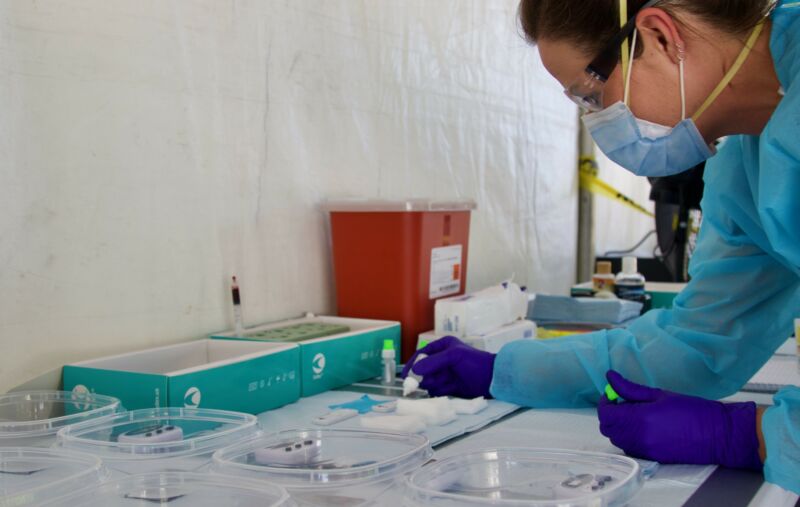
Enlarge / A nurse at the Miami Beach Convention Center Community Based Testing Site conducts a COVID-19 antibody test. The Florida Guard is providing support at the Miami Beach hybrid CBTS and Hard Rock Stadium CBTS to allow the state and local partners to conduct antibody testing for first responders at both facilities. (US Army photo by Sgt. Leia Tascarini) (credit: Army Sgt. Leia Tascarini)
It's been clear from quite early in the COVID-19 pandemic that a substantial number of people who get infected by SARS-CoV-2 don't experience significant symptoms. This simple fact has enormous public health consequences, as these asymptomatic individuals can still pass the infection on to others. That means that even if we were able to get everyone with symptoms to self-isolate, we may still be unable to check the spread of the pandemic. It also makes it much harder to find out the true spread of the virus, since many people won't bother to get tested if they aren't feeling unwell.
Most of the data on the spread of the pandemic within the US comes from tests that pick up the presence of the virus' genome, which indicates the presence of an active infection. But you have to catch the person while the infection is happening for this to work. The alternative is to look for an indication of a past infection: the presence of antibodies against SARS-CoV-2. While the immune response to the virus is complex and isn't present immediately after an infection, most people have at least some antibodies a few weeks after the virus is cleared.
This allows widespread antibody testing to provide a clearer picture of the virus' past spread through a population. On Tuesday, the CDC started releasing lots of data from past antibody testing. While it was from a period where the virus was relatively rare in the US, the data provides a sharp contrast to the RNA-based tests from the same time, showing that lots of infections have gone undetected.
No comments:
Post a Comment